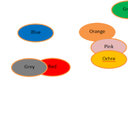The influence of ripening stage and region on the chemical compounds in mulberry fruits (Morus atropurpurea Roxb.) based on UPLC-QTOF-MS.
Avainsanat
Abstrakti
Mulberries (Morus atropurpurea Roxb.) are rich in beneficial nutrients and secondary metabolites. Dramatic climate differences between western and eastern China lead to differences among the fruiting habits of mulberries grown in these regions. In this study, Xinjiang and Jiangsu, two regions in western and eastern China, respectively, were selected as sites where mulberry fruits (MFs) at different ripening stages were sampled. Their individual components, including both targeted and non-targeted chemical compounds, were detected by rapid ultra performance liquid chromatography-quadrupole time-of-flight mass spectrometry (UPLC-QTOF-MS). Multivariate statistical analyses, including principal component analysis (PCA) and orthogonal partial least squares discriminant analysis (OPLS-DA) were used to compare MFs during ripening from these two regions. Potential biomarkers, which significantly contributed to the differentiation of the samples, were further identified or tentatively identified to determine the effects of ripening stages and regions on the chemical compounds in MFs. The results show that 43 compounds classified into nine different groups were identified in the MF samples from both the Xinjiang and Jiangsu regions. Among the compounds, all anthocyanins, carbohydrates and dihydroflavonols increased while phenolic acids and hydroxycoumarins decreased during ripening. Caffeoylquinic acids and some of anthocyanins could be regarded as important markers for MF ripening, and the accumulation of organic acids differentiated the samples from the two regions. Together, UPLC-QTOF-MS coupled with multivariate statistical analyses may be effective for metabolite profiling and identification of ripening degrees and cultivation regions.



